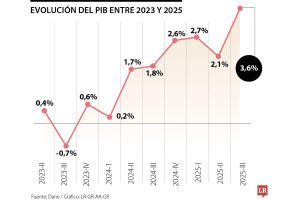Bond volatility, surging interest rates and a resilient U.S. dollar suggest investors should beware of the bust that could follow the boom.
- Bullish stock investors seem to be shrugging off concerning contradictions in markets.
- Bond volatility is twice its long-term average, portending turbulence for stocks as well.
- History also suggests that recent resilience in both Treasury rates and the U.S. dollar could start to weigh on equity valuations.
- Investors should consider Japanese and emerging-markets stocks, as well as commodities, as hedges for a peaking U.S. dollar.
The stock market rally that marked the first half of 2023 continues into the second half, as many investors cling to the optimism that has helped the market advance by 15% for the year to date. They believe the Federal Reserve will successfully tame inflation and swiftly turn to cutting interest rates, while U.S. economic growth and company earnings stay solid.
Such bullishness flies in the face of deteriorating economic data. Manufacturing indices from the Institute for Supply Management, which look at manufacturing-sector activity and have historically been a strong indicator about the overall direction of the economy, have been sliding for 18 months and have been in contraction territory for the last eight of those. The Conference Board’s index of leading economic indicators has been declining since December 2021, while industrial production and retail sales, adjusted for inflation, are approaching zero growth year over year. And the New York Federal Reserve’s model of recession probability is now flashing 71%.
In fairness, there are reasons to believe the economy may be headed for a “soft landing” without entering a recession, including tailwinds from fiscal stimulus programs and central-bank support for financial conditions. However, we also see concerning disconnects in the markets that equity investors appear to be shrugging off:
1. Significant volatility in the bond market:
Bond volatility, measured by the MOVE Index, has risen over the past few years and remains high; for most of the Fed’s recent rate-hiking cycle, it has been running at twice its long-term average. Meanwhile, stock market volatility, as measured by the VIX Index, has continued to decline toward lows for the current cycle. These two indices historically mirror each other closely, but this divergence has been wide and prolonged, suggesting stock investors might need to brace for higher volatility ahead.
2. A resurgence in real, or inflation-adjusted, interest rates:
The 10-year Treasury bond’s real yield—an important benchmark for stock valuation—has climbed over the past few months to 1.79%, back above the level it reached in October 2022, when the S&P 500 hit its bear-market low. With all else being equal, higher rates tend to reduce stock prices as investors discount future cash flows more heavily.
3. A resilient U.S. dollar:
The U.S. dollar serves as an ultimate safe-haven asset and, historically, has moved inversely with stocks. This year, it’s notable that stocks have gained about 15% so far, even as the dollar has remained resilient versus other major currencies, trading in a relatively narrow range. Investors should wonder how much longer this unlikely trend will continue.
There has been a good deal of enthusiasm in the stock market, but investors should ask if the narrative hangs together. If equity investors are truly expecting a “soft landing” for the economy, the rally should logically broaden out to include all cyclical sectors and value-style stocks, as well as small caps. However, the rally remains primarily driven by a handful of mega-cap growth stocks in technology and communications services, adding to the market’s inconsistencies with itself. Some of these things need to start lining up if the “new bull market” thesis is to be convincing.
At this time, investors should beware the bust that follows the boom. To help bolster your portfolio, consider adding duration by investing in longer-maturity bonds. In equities, diversify using active managers or equal-weighted indices. We continue to see Japanese and emerging-markets stocks, as well as commodities, as good hedges for a peaking U.S. dollar.
Information extracted from: https://www.morganstanley.com/ideas/stock-market-rally-2023-reasons-for-caution?subscribed=true&dis=em_2023712_wm_5ideasarticle&et_mid=480033&et_mkid=&sfmc_id=176741428







